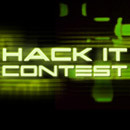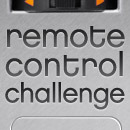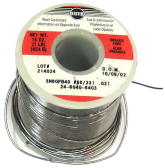Vacuum fluorescent displays (VFD) make any consumer device looking eye-catching, compelling and unusual. A VFD emits a very bright light with high contrast and can support display elements of various colors, some of them are capable of rendering not only seven-segment numerals but characters and even graphical information. VFDs are equally great for anything from professional devices to basic do-it-yourself things. Yet VFDs are rather expensive for small hobby projects and notorious for their non-trivial control as they require voltages higher than just TTL levels, necessity to drive grids in addition to segments or dots and therefore make presence of dedicated VFD controllers highly desirable just to simplify communication with microprocessors.
But what if all this infrastructure already existed, would it be that difficult to combine together something like Arduino controller and VFD? The answer is no, not at all! Most modern DVD players equipped with VFDs and when less reliable mechanical parts (DVD ROM drives) fail devices are simply thrown away. Instead, some electronics could still be reused to give your project a completely new look reducing costs at the same time and saving the environment. In addition to a VFD with controller onboard and a power supply which provides everything with all vital voltage levels there is a bonus – an IR receiver and buttons. VFD controller takes care of refreshing display, handling events from buttons and IR receiver encapsulating whole control into a serial interface and making integration with even primitive controllers very possible, giving in exchange fully functional remotely controlled system.
But enough theory, let’s have a look at a real example. We found a broken DVD player literally lying in the street. Quick test indicated that VFD board and power supply were functional. VFD was 16-segment and therefore capable of displaying not only digits but characters as well. After a few minutes of internet search model name was identified: Philips DVP 630.
A few more minutes – and service manual with schematic diagrams was found as well. After opening up Philips DVP630_632_642 schematic diagram and looking at page 3 it becomes obvious that the player utilises DP501 HNV-07SS61 display from Samsung which is controlled by HT16512. Then downloading datasheet for HT16512 – it is a VFD driver with 11 segment output lines, 6 grid output lines, 5 segment/grid output lines 4 LED output ports, a control circuit, a display memory and a key scan circuit. Serial data inputs to the HT16512 through a three-serial interface – just what we need!
Returning back to the page 3 of the service manual, checking RB502 connector – there are V-CLK, V-CS, V-DATE to control VFD. Also we will need GND, IR (output from infrared receiver) and +5V. An attentive reader should notice that there is also +5V_STB at RB501 connector. It is 5V standby voltage that is always applied. +5V appears only after pressing either ‘StandBy’ TA501 button on DVD’s front panel or On/Off button on a remote control. The power supply is instructed to activate/deactivate +5V via PCON signal. But in order to wake up the player from a remote control only original RC must be used otherwise IC581 won’t recognise the command. We want to make our device working with ANY type of RC that is why our microcontroller must take responsibility of decoding RC commands and controlling PCON signal.
Let’s have a closer look at the VFD and its driver. For an external device VFD is accessible through a serial interface as static RAM. The display has 7 digits (symbols) by 16 segments. Each symbol is defined by two bytes (16 bits), so in total 14 bytes are used. A symbol is encoded by a combination of bits, a bit set to ‘1’ makes a segment to glow. Most significant byte comes first, most significant bit also comes first. So, in order to display very first symbol on the display as ‘1’ the first byte of RAM should be set to value 0x20 and the second one – to value 0x6. In other worlds, we need to
set bits 13, 2, 1 to logical ‘1’ and in binary representation it looks as 0010000000000110b.
Note, that colon is controlled with one single bit 5 and it is available for 3-th and 5-th digits only. Two vertical segments in the middle of digit are simultaneously driven by a single bit 9, there is no way to activate only one out of two segments.
In order to simplify output to the display a software driver has to be implemented. In the next article we will go through this process.




















Leave a Reply
You must be logged in to post a comment.